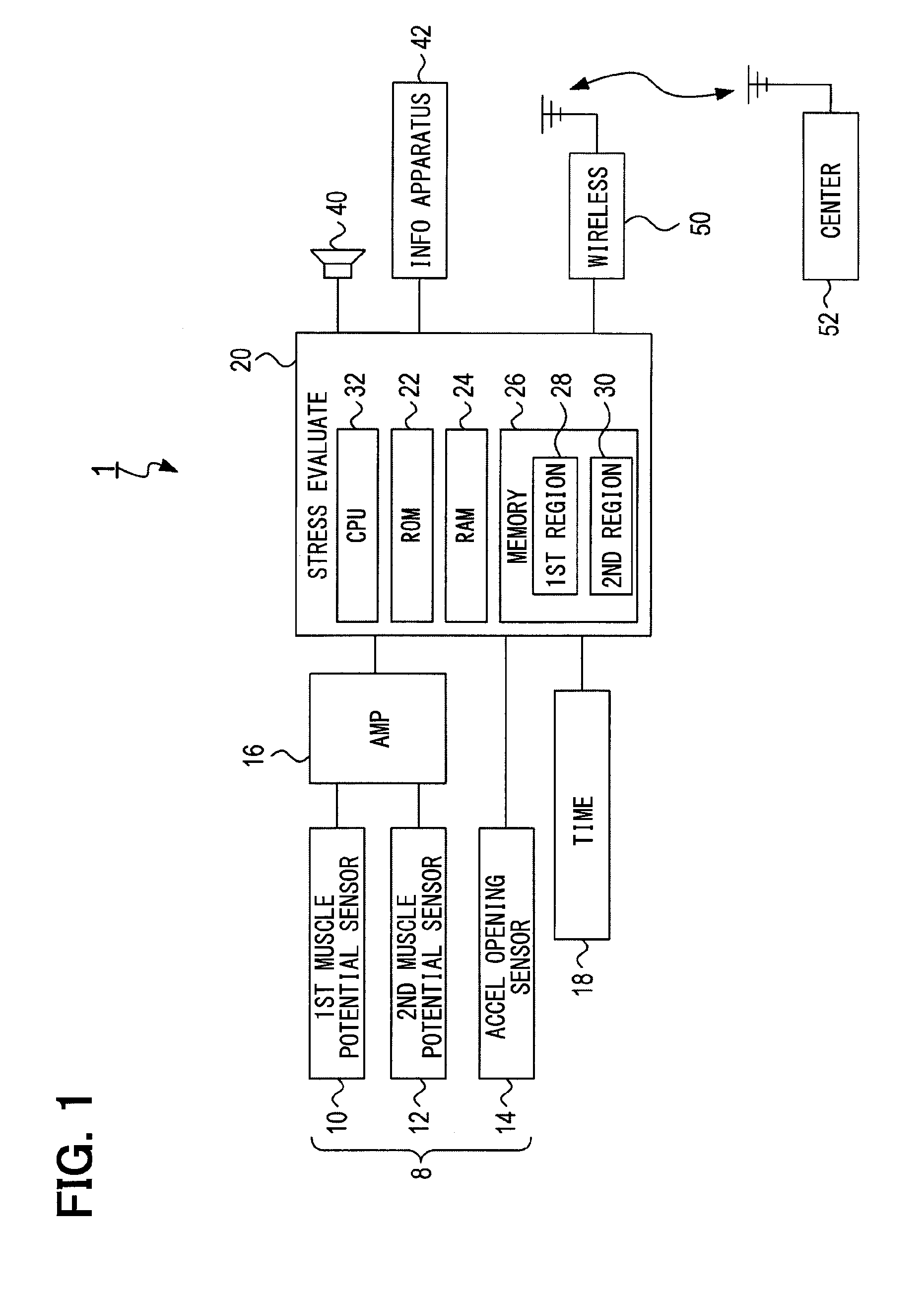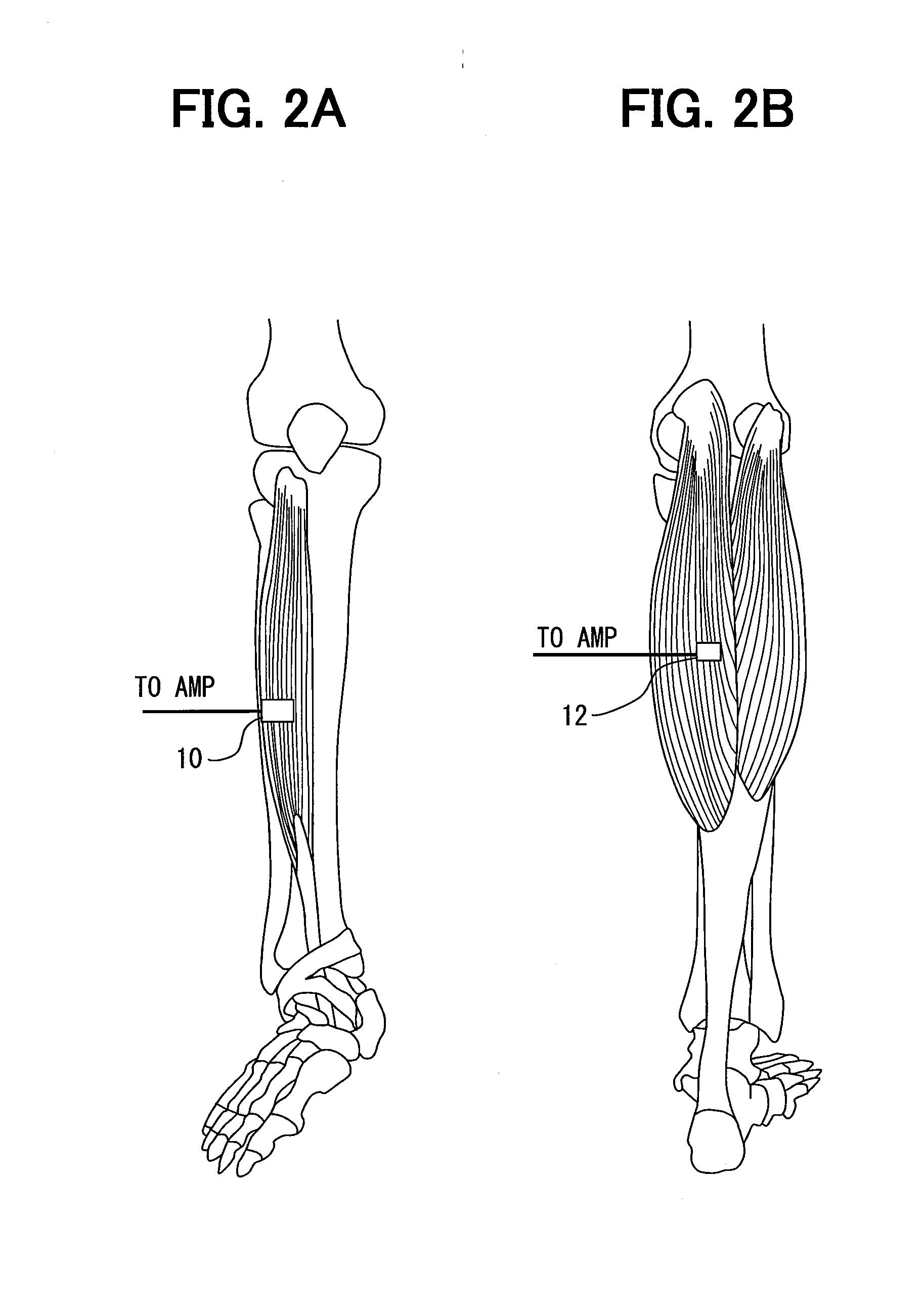Stress evaluation apparatus
a technology of stress evaluation and apparatus, which is applied in the field of stress evaluation apparatus, can solve the problems of driver stress (mental burden), increased number of complicated hmis, and inability to manipulate the in-vehicle information apparatus via an hmi
- Summary
- Abstract
- Description
- Claims
- Application Information
AI Technical Summary
Benefits of technology
Problems solved by technology
Method used
Image
Examples
embodiment
Effect of Embodiment
[0109]As described above, the present inventors have found that the stress resulting from a manipulation of the in-vehicle information apparatus 42 causes a change in the synchronous activity level M obtained by evaluating the amount of the activity of the both first and second antagonistic muscles which are simultaneously acting.
[0110]On the basis of the finding, the stress evaluation apparatus 20 evaluates the stress received by the driver in accordance with the synchronous activity level M. Thus, with the stress evaluation apparatus 20, it is possible to evaluate the stress received by a driver (vehicle occupant) who is driving as a result of manipulating the in-vehicle information apparatus 42 via an HMI.
[0111]In other words, the stress evaluation apparatus 20 allows objective evaluation of the stress resulting from a manipulation of the in-vehicle information apparatus.
[0112]When the driver is manipulating the accelerator pedal so as to accelerate / decelerate...
PUM
 Login to View More
Login to View More Abstract
Description
Claims
Application Information
 Login to View More
Login to View More - R&D
- Intellectual Property
- Life Sciences
- Materials
- Tech Scout
- Unparalleled Data Quality
- Higher Quality Content
- 60% Fewer Hallucinations
Browse by: Latest US Patents, China's latest patents, Technical Efficacy Thesaurus, Application Domain, Technology Topic, Popular Technical Reports.
© 2025 PatSnap. All rights reserved.Legal|Privacy policy|Modern Slavery Act Transparency Statement|Sitemap|About US| Contact US: help@patsnap.com



